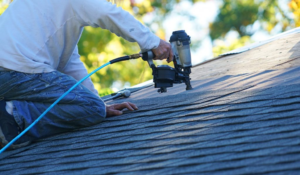For those with a home improvement project on the horizon, you know that many different contractors are required to complete the job. You need a counter guy, plumber, painter, and more.
Enter the General Contractor. A GC is equipped to perform various tasks on your home renovation project, including budget estimation, planning, and construction. Contact General Contractor In Lawrenceville GA now!

The general contractor is responsible for coordinating the various tasks of construction projects. Whether performing these functions themselves or engaging a construction management firm, they are knowledgeable of the operations of specialty contractors (like mechanical or electrical) as well as of installation contractors (like material and equipment suppliers). This expertise can help in the avoidance of waste, excessive cost and delays due to lack of coordination between specialists. The general contractor is also knowledgeable about the labor force employed in construction. They understand whether or not craftsmen are unionized and, if so, the terms of the contract under which they work.
A project manager, on the other hand, works with you directly. Often, they’ll pitch ideas and offer advice to you during the process. They’ll follow your day-to-day directions and keep you abreast of major and minor developments. They’ll also advocate for you when negotiating subcontractor prices and rates.
Unlike a general contractor, who charges a percentage of the project’s overall cost, a project manager works for either a flat fee or on an hourly basis. This means they have your best interests—and your budget—in mind at all times.
With a construction project management tool, it’s easy to share updates with your team and stay on top of deadlines. Visually track progress with Gantt charts, bring roadmaps to life and get notifications when plans shift. This way, everyone’s on the same page, and you can ensure your project is on track for success. You can even create custom, shareable dashboards and reports to send weekly. Check out the tools in our collection of free project management software to see what suits your needs. We’ve got everything from the basics to more advanced features so you can find the right tool for your project.
Scheduling
General Contractors can be a huge help when you’re planning a home remodel or addition, and they can even take some of the stress out of it. They ensure that all work is done according to procedure and that the proper steps are taken to make sure projects adhere to standards for safety, liability, and quality.
They also schedule the project to meet milestones and deadlines. This can involve coordinating with a variety of stakeholders, including other GCs and subcontractors, suppliers, and other key players in the construction process. Typically, they’ll participate in the Design Phase of a project alongside an architect and create a scope of work to submit for bidding or a contract.
As part of their estimating team, they’ll choose a bid that is within their projected profit margin and evaluate the risks inherent in a specific construction project. The GC will consider the cost of materials, labor, company overhead and equipment, and any other expenses associated with the project.
Depending on the type of construction project, they may use a fixed price contract or a lump sum contract. In the case of a fixed price contract, the GC will work with their client to determine the scope of work and then quote a fee for the entire job. This fee will include a markup to cover overhead costs and allow for a profit.
Whether they’re working with a fixed-price or lump sum contract, the GC will work closely with their client throughout the construction process to monitor progress, review change orders, and ensure that milestones are met on time. They’ll also keep track of a construction schedule and work with the project architect to coordinate a construction timeline that aligns with the architectural plans.
Budgeting
Inaccurate construction budgets can create lasting negative impacts on a general contractor’s bottom line. That’s why it’s important to spend time preparing budget estimates with the help of professional estimators and quotes from suppliers and subcontractors. This approach helps you develop comprehensive financial plans that align with the project scope and desired outcomes of a build.
A thorough construction budget considers labor, materials, equipment and overhead costs. It also includes a contingency fund to cover unexpected expenses. This contingency can be used to pay for unforeseen delays or to cover unscheduled work. Depending on the project, these expenses may be the responsibility of the general contractor or the client.
It’s critical to understand the responsibilities of each party in regards to these additional project costs before developing a budget for any job. Some of these costs are controllable, while others will depend on the project’s location and local labor market conditions. For example, labor rates and tax expenses vary from region to region. Likewise, permit fees can fall on the general contractor, the subcontractor, or the project owner, depending on the contract stipulations.
One of the best ways to prevent costly change orders is by establishing a solid construction budget that takes into account each project’s unique challenges. Moreover, by communicating with both the project owner and your supplier partners effectively, you can address potential changes in the field before they become a significant cost.
Finally, you should review the performance of your previous budgets to identify areas for improvement. This process may seem tedious, but it’s essential to your long-term success. Coming in under budget demonstrates that you’re paying close attention to detail and are bringing pragmatic solutions to the table—both of which can boost your reputation as a trusted partner.
Permits and Inspections
As part of the construction process, your GC will need to obtain building permits. This includes the building permit to start construction and any sub-permits for plumbing, electrical, etc. He will also need to get inspections on the project from code enforcement officials throughout the build. It’s helpful to work with a general contractor that has worked in your local area, as they may already have a good understanding of your town’s rules and regulations. This will speed up the process and can help prevent potential delays due to failed inspections.
The GC is typically responsible for executing a design that has been developed by the architect and contract owner. However, he may also be involved in the initial planning stages of the project as well, and will be expected to produce a budget, schedule, and source materials and equipment to bring the design to life. GCs will usually hire specialized subcontractors to perform the majority of the actual construction work on the site.
GCs are required to have the proper licensing, insurance, and bonds in order to operate legally. They are also generally expected to be highly experienced and seasoned, having built numerous projects over the course of their career. This experience allows them to quickly address any out-of-the-box issues that arise on a project, and provides owners with confidence in the ability of their GC to deliver.
Corr adds that another way you can tell a quality GC from a less-qualified one is by their membership in industry associations and specialized organizations. This means that these groups back up their workmanship, and it’s a sign that they are part of an established and respected network within the community.
Subcontractors
GCs are responsible for managing subcontractors, who have their own responsibilities on the job site but work under the supervision of the GC. The GC may contract with subcontractors for specific tasks such as demolition, excavation, masonry and concrete work, or they may hire them for the entire project. GCs should ensure that all subcontractors provide quality workmanship and adhere to project specifications. They also perform inspections of the subcontractors’ work and address any issues that arise.
While a GC can oversee construction on a large project, they do not have the skills and resources to manage every aspect of the build themselves. It’s important for a GC to have experience to know when to bring in specialists to ensure that all aspects of the job are completed properly and the client’s vision comes to life.
Because of their comprehensive responsibilities, GCs typically earn more than subcontractors. However, the amount they make depends on the size and complexity of the project.
GCs must also ensure that their own team has all the necessary equipment, tools and safety gear needed to work safely on the job site. Often, they will provide a list of requirements for the subcontractors to comply with before the job starts. They will also review the subcontractors’ insurance coverage, safety records and financial stability to be sure they have the capacity to meet their obligations on the project.
Because of the way the payment chain works in construction, it’s important for GCs to communicate effectively with their subcontractors and ensure that everyone is aware of how the schedule and budget will impact their work. Keeping all parties in the loop can help avoid misunderstandings, disputes, and costly delays down the line.








